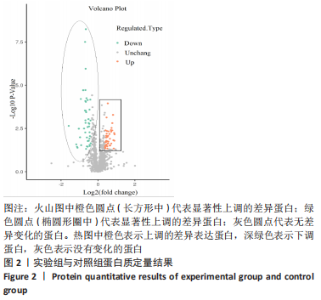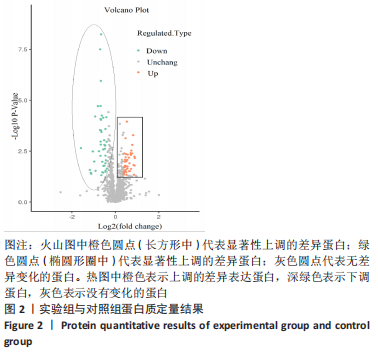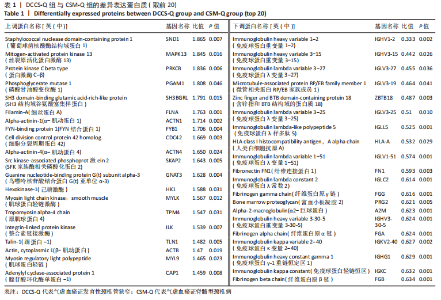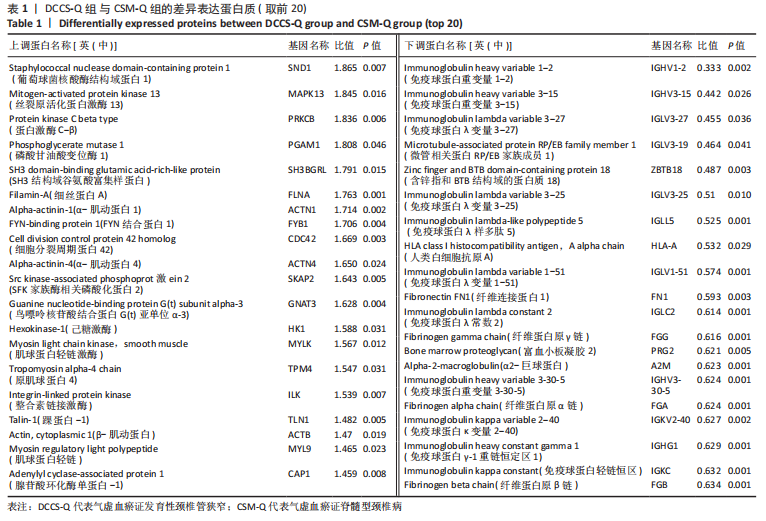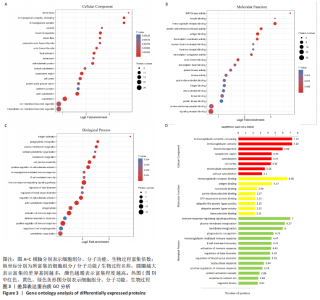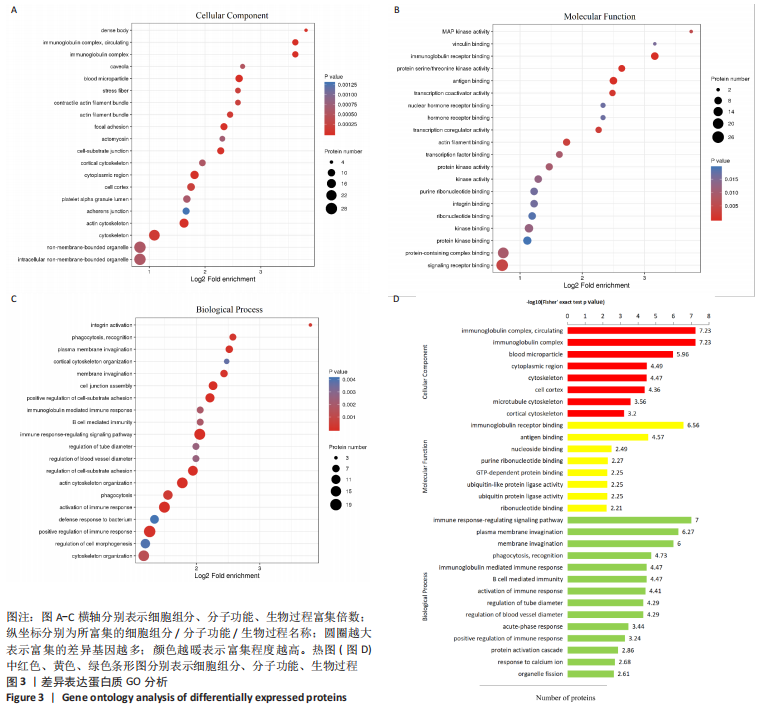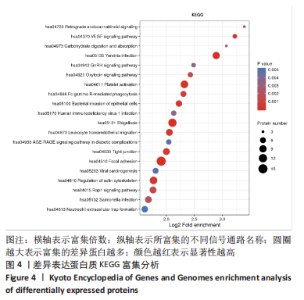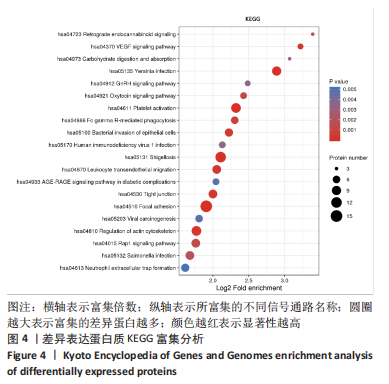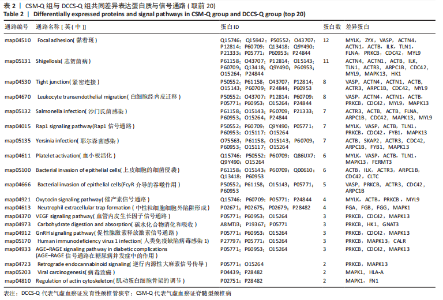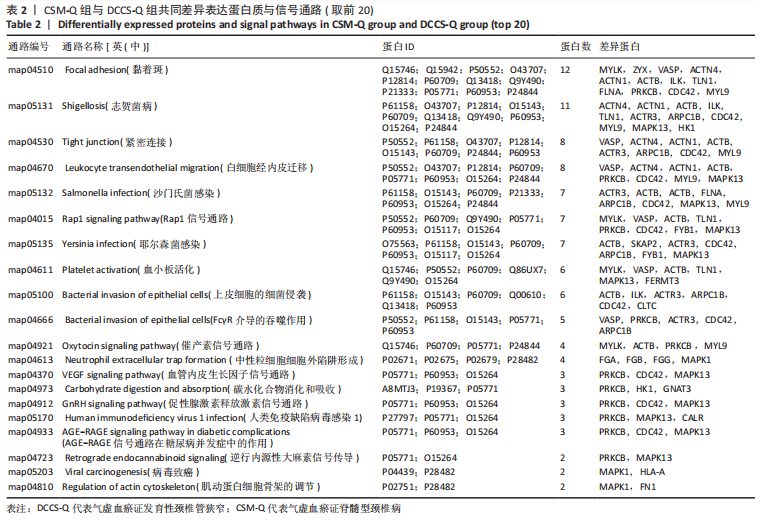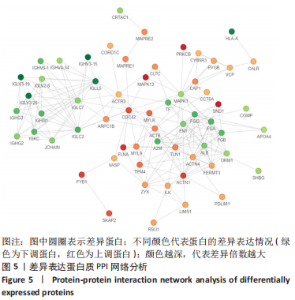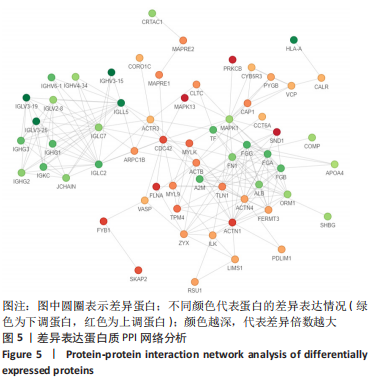[1] 来佳辉, 罗建平, 张新胜, 等. ACDF治疗单节段脊髓型颈椎病合并发育性颈椎管狭窄临床疗效分析[J]. 中国脊柱脊髓杂志,2021,31(7):605-612.
[2] 陈盛, 刘建航, 刘本涛, 等.脊髓型颈椎病动物模型制作的关注热点[J]. 中国组织工程研究,2020,24(24):3890-3896.
[3] 钟远鸣, 许伟, 李智斐, 等. 运用脊髓伤方治疗脊髓型颈椎病的临床研究[J]. 辽宁中医杂志,2018,45(10):2133-2136.
[4] 谭雄进. 发育性颈椎管狭窄合并脊髓型颈椎病的临床特征与手术疗效[J]. 临床军医杂志, 2012,40(3):624-626.
[5] WANG J, ZHU C, LI H, et al. Classification and Surgical Treatment of Developmental Spinal Canal Stenosis at Atlas Level: A 15-Case Study. Spine (Phila Pa 1976). 2021;46(22):1542-1550.
[6] ZHANG J T, WANG L F, LIU Y J, et al. Relationship between developmental canal stenosis andsurgical results of anterior decompression and fusion in patients with cervical spondylotic myelopathy. BMC Musculoskelet Disord. 2015;16:267.
[7] 张耀, 黄开, 沈忆新, 等. 脊髓型颈椎病患者颈脊髓与椎管匹配关系和脊髓致压因素的动态变化分析[J]. 中国脊柱脊髓杂志,2021,31(10):886-894.
[8] YANG L AO, HOU A, ZHANG X, et al. TMT-based proteomics analysis to screen potential biomarkers of Achyranthis Bidentatae Radix for osteoporosis in rats . Biomed Chromatogr. 2022;36(4):e5339.
[9] 林若慧, 陈赛楠, 叶云金, 等. 基于TMT蛋白质组学分析骨疏康胶囊治疗骨质疏松模型大鼠的机制[J]. 中国组织工程研究,2021,25(32):5141-5147.
[10] 蔺海旗, 陈亮, 唐璐, 等. 尿液蛋白质组学评估机体病理性变化的意义[J]. 中国组织工程研究,2021,25(20):3259-3266.
[11] 中华外科杂志编辑部. 颈椎病的分型、诊断及非手术治疗专家共识(2018) [J]. 中华外科杂志,2018,56(6):401-402.
[12] HORNE PH, LAMPE LP, NGUYEN JT, et al. A Novel Radiographic Indicator of Developmental Cervical Stenosis. J Bone Joint Surg Am. 2016; 98(14):1206-1214.
[13] 国家中医药管理局. 中医病证诊断疗效标准 2012 版(中华人民共和国中医药行业标准)[S]. 北京:中国医药科技出版社,2012.
[14] 陈亮, 王冲, 高峰, 等. 脊髓型颈椎病的研究进展[J]. 中国康复理论与实践,2019,25(8):875-881.
[15] TU J, VARGAS CASTILLO J, DAS A, et al. Degenerative Cervical Myelopathy: Insights into Its Pathobiology and Molecular Mechanisms. J Clin Med. 2021;10(6):1214.
[16] 秦晓宽, 银河, 杨博文, 等. 益肾养髓方对脊髓型颈椎病大鼠脊髓中星形胶质细胞过度增殖的影响 [J]. 中药新药与临床药理,2022,33(2):173-179.
[17] 银河, 陈琳, 陈忻, 等. 脊髓型颈椎病动物模型的研究现状[J]. 中华中医药杂志,2021,36(1): 354-357.
[18] WOLF BS FAU - KHILNANI M, KHILNANI M FAU - MALIS L, MALIS L. The sagittal diameter of the bony cervical spinal canal and its significance in cervical spondylosis. J Mt Sinai Hosp N Y. 1956;23(3):283-292.
[19] 钟远鸣, 李志斐, 许建文, 等. 动态颈段MRI在脊髓型颈椎病早期诊断中的价值[J]. 中国组织工程研究与临床康复,2008,12(22):4275-4278.
[20] 钟远鸣, 史明, 李智斐, 等. 屈伸位颈椎MR扫描对颈椎管狭窄程度的研究[J].中国骨伤, 2009,22(2):126-127.
[21] 来佳辉, 李宗阳, 简磊, 等. 发育性颈椎管狭窄影像学评估的研究现状[J].河南医学研究, 2020,29(32):6143-6146.
[22] 严小明, 连福明, 林智勤. 脊髓型颈椎病与发育性颈椎管狭窄的关系[J].中外医疗,2017, 36(21):32-35.
[23] LIANG F, WANG B, BAO L, et al. Overexpression of ILK promotes temozolomide resistance in glioma cells. Mol Med Rep. 2017;15(3): 1297-1304.
[24] PAN L, NORTH H A, SAHNI V, et al.β1-Integrin and integrin linked kinase regulate astrocytic differentiation of neural stem cells. PLoS One. 2014;9(8):e104335.
[25] 李相国, 杜万雪, 徐娅丽, 等. 基于ILK信号通路探究马桑水提取物影响大鼠烧伤创面愈合和瘢痕增生的机制[J]. 中国病理生理杂志,2020,36(2):336-345.
[26] 巩守平, 王文涛, 钟大林, 等. 兔脊髓缺血再灌注损伤时凝血功能的变化及谷氨酰胺预处理的影响[J]. 第四军医大学学报,2009,30(3):251-253.
[27] 王甜甜, 邵静茹, 王杰, 等. 新型FGG基因突变导致遗传性纤维蛋白原缺陷症的研究[J]. 中国实验血液学杂志,2021,29(2):586-590.
[28] 周俊岭, 马礼坤. 瑞舒伐他汀抑制去氧皮质酮诱导大鼠心肌纤维化的作用影响[J]. 安徽医科大学学报,2013,48(10):1183-1186.
[29] XIA M, ZHU Y. Fibronectin enhances spinal cord astrocyte proliferation by elevating P2Y1 receptor expression. J Neurosci Res. 2014;92(8): 1078-1090.
[30] 代利霞, 宋君, 黄鹏, 等. Rho GTP酶在大鼠髋臼软骨细胞早期发育中的作用[J]. 中华小儿外科杂志,2021,42(11):1026-1032.
[31] 宋瑞龙, 徐天祺, 梁琰, 等. Cdc42调控细胞骨架影响破骨细胞分化的研究[J]. 畜牧与兽医,2020,52(3):50-55.
[32] YUAN WH, XIE QQ, WANG KP, et al. Screening of osteoarthritis diagnostic markers based on immune-related genes and immune infiltration. Sci Rep. 2021;11(1):7032.
[33] 胡颖, 梁涛, 张骏. 细胞分裂周期蛋白42在神经系统疾病中机制的研究进展[J]. 医学综述,2019,25(6):1076-1080+1089.
[34] JOHNSON A, NASSER TIN, SPENCER GE. Inhibition of Rho GTPases in Invertebrate Growth Cones Induces a Switch in Responsiveness to Retinoic Acid. Biomolecules. 2019;9(9):460.
[35] GEOFFROY CG, ZHENG B. Myelin-associated inhibitors in axonal growth after CNS injury. Curr Opin Neurobiol. 2014;27:31-38.
[36] 李珊珊, 郭晓汐, 安输, 等. 小G蛋白Rap的信号通路与生物学功能[J]. 生理科学进展, 2016,47(1):14-20.
[37] HAMILL KJ, HIROYASU S, COLBURN ZT, et al. Alpha actinin-1 regulates cell-matrix adhesion organization in keratinocytes: consequences for skin cell motility. J Invest Dermatol. 2015; 135(4):1043-1052.
[38] 钟志辉, 林焱斌, 庄研, 等. 骨肉瘤组织ACTN4和CD133的表达及其影响因素[J]. 福建医药杂志,2021,43(5):117-120.
[39] ZHANG YY, TABATABA H, LIU XY, et al. ACTN4 regulates the stability of RIPK1 in melanoma. Oncogene. 2018;37(29):4033-4045.
[40] CONBOY E, VAIRO F, WAGGONER D, et al. Pathogenic Variant in ACTB, p.Arg183Trp, Causes Juvenile-Onset Dystonia, Hearing Loss, and Developmental Delay without Midline Malformation. Case Rep Genet. 2017;2017:9184265.
[41] CUVERTINO S, STUART HM, CHANDLER KE, et al. ACTB Loss-of-Function Mutations Result in a Pleiotropic Developmental Disorder. Am J Hum Genet. 2017;101(6):1021-1033.
[42] LEE SJ, OSES-PRIETO J AO, KAWAGUCHI R AO, et al. hnRNPs Interacting with mRNA Localization Motifs Define Axonal RNA Regulons. Mol Cell Proteomics. 2018;17(11):2091-2106.
|
